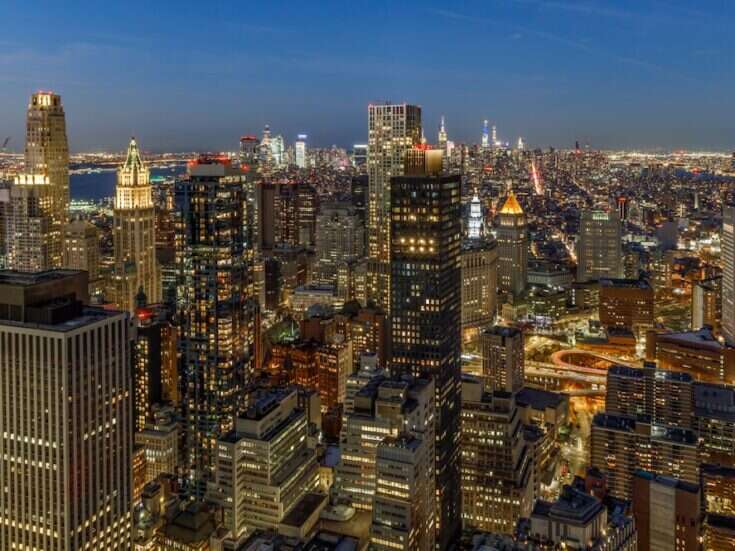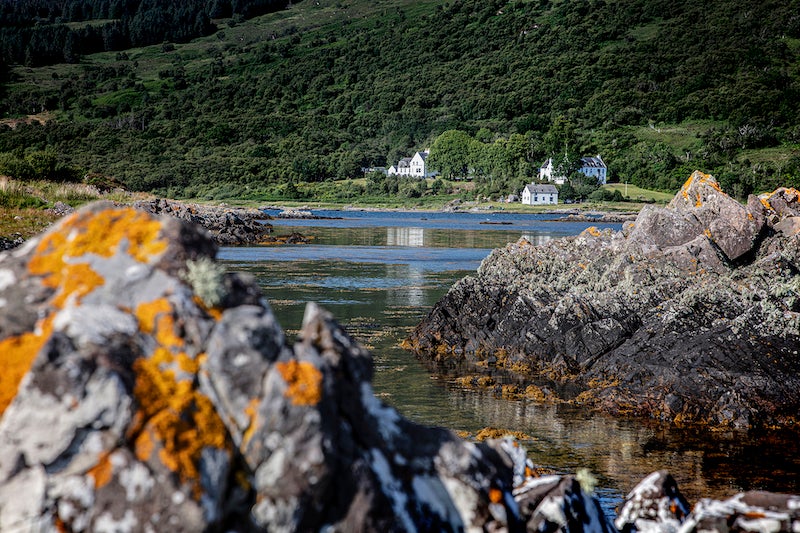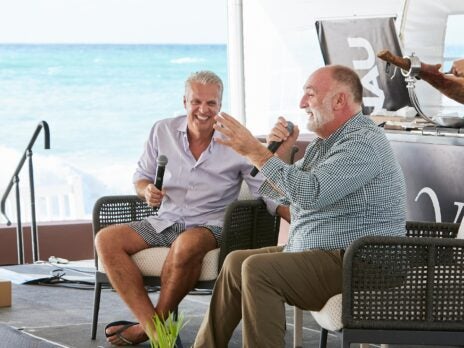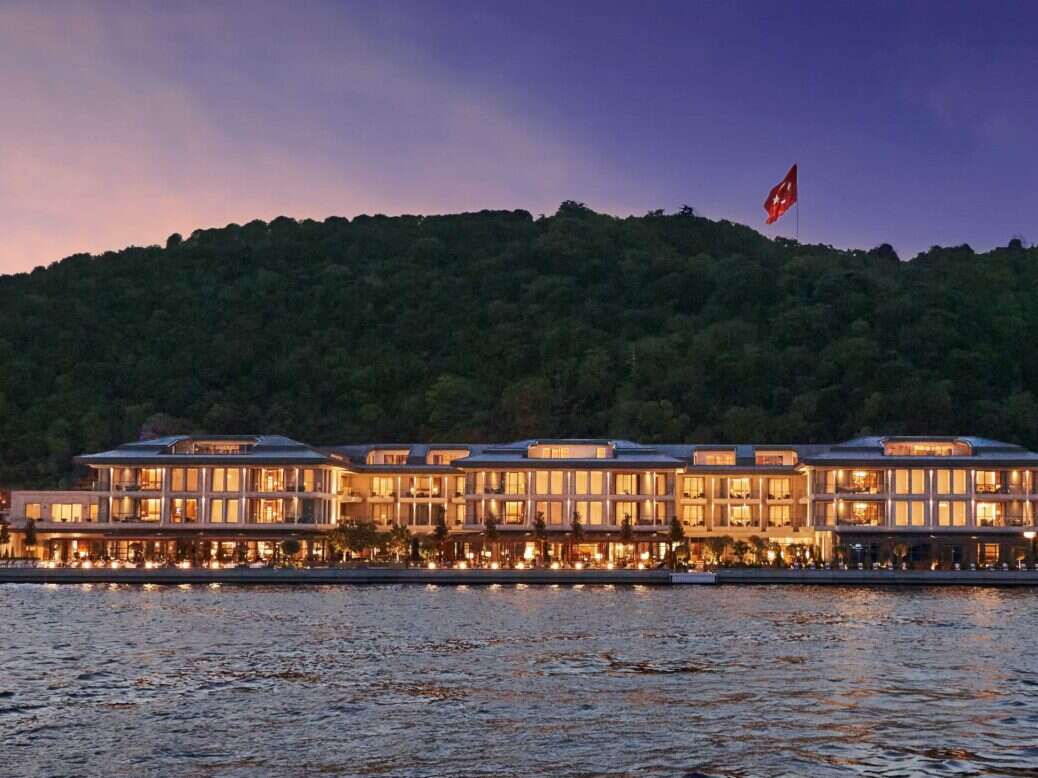
Positioned as the cradle of civilization for millennia, Byzantium, Constantinople and more recently Istanbul, is a modern metropolis of meteoric proportions. Settled by Greeks from Megara around 660 BC, today Istanbul remains influenced by the numerous civilizations to have called it home. The Bosphorus Strait — the great artery that acts as a demarcation line between Europe and Asia — has defined this landscape for centuries. It’s also home to Mandarin Oriental Bosphorus.
Few places are better suited to a Mandarin Oriental property than the great crux between Europe and Asia. Mandarin Oriental Bosphorus graces the western banks of the strait — the European side — where tourists will spend most of their time in the city. The west is Istanbul’s cultural, historic and business hub, while the east is considered more residential and where the bulk of the populace lives. Three vast suspension bridges cross the Bosphorus, the first, built in 1973, sees over 170,000 vehicles daily. Sitting between the first and second bridges, Mandarin Oriental Bosphorus is thought to be one of the only hotels with rooms offering views of both. While Istanbul is rife with remarkable religious sites, there is no doubt that these bridges act as shrines to feats of humanity.
This western bank of the Bosphorus offers the ideal position for Mandarin Oriental. The hullabaloo of the senses that captivates visitors to Istanbul can be found a short drive south, while a few minutes’ north leads to the affluent neighborhood of Bebek. Posing as Istanbul’s answer to the French Riviera, Bebek is awash with fine restaurants and cafes, bulging with portly alfresco diners that spill out onto Ferarri-lined streets.
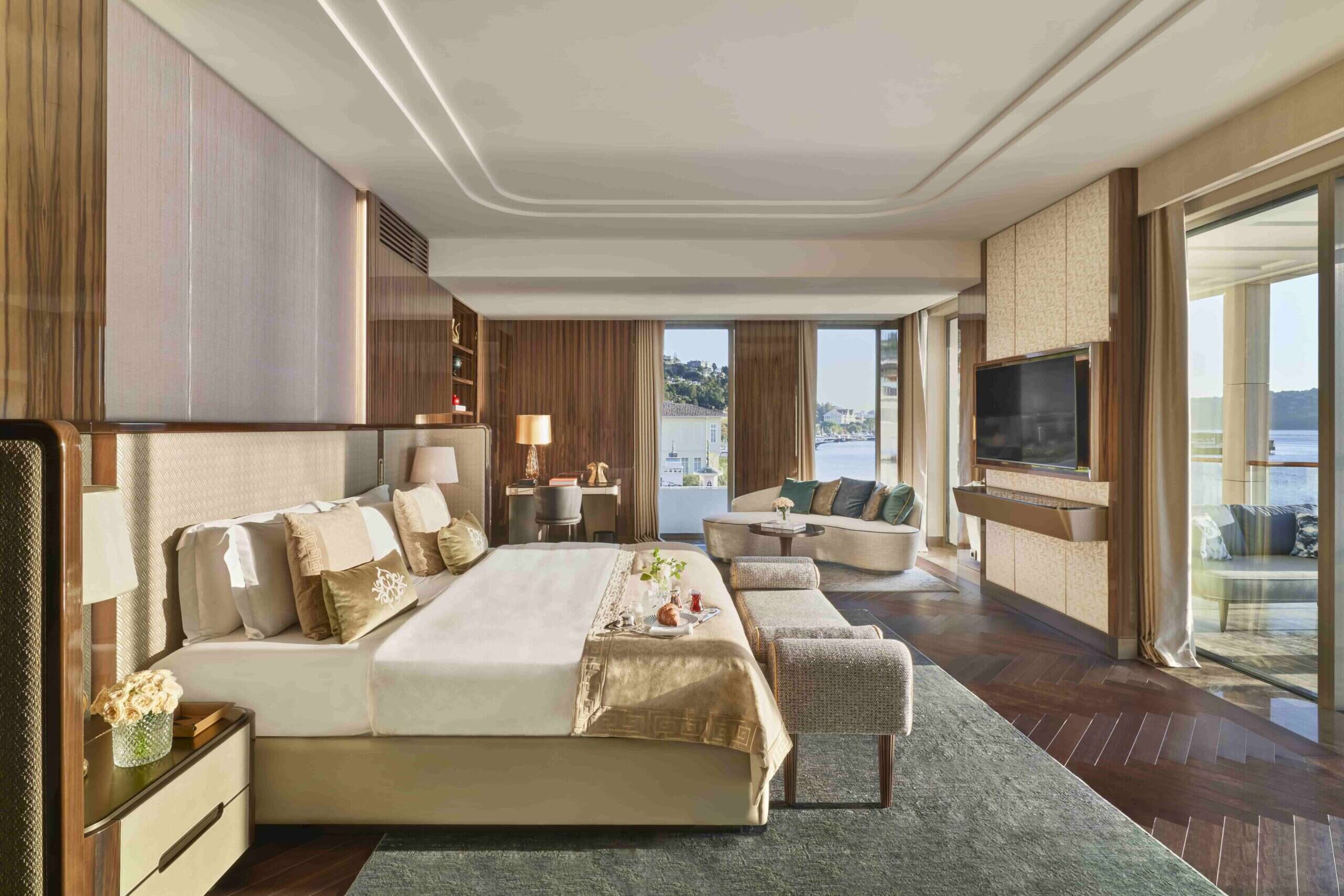
Most visitors arrive at the hotel via the coastal road, but those wanting a more extravagant arrival should head for the water. Boats can briefly moor up to the front of the property, allowing guests to step off like a pirate boarding an enemy vessel. On this occasion, it’s directly into one of the Mandarin’s two restaurants. After a morning visiting the famous Hagia Sofia, we did just this, journeying down the Bosphorus — the boat chased by dolphins — before throwing the line and stepping directly onto the hotel’s terrace. It beats sitting in traffic any day but maybe leave the eye patch and cutlass at home.
The Mandarin Oriental Bosphorus boasts a surprising size: It covers 12 acres dominating its section of the bank, yet it’s not imposing. In fact, from the road, it’s barely noticeable. Set at a lower elevation, the hotel only reveals itself upon arrival, its downward sweeping entrance ramp leading to a courtyard. More surprising is the hotel’s depth. Large-scale excavations took place during its construction so while modest from the outside, the hotel includes a sizable spa and cavernous event space. It’s a naturally lit bunker of business and serenity, complete with multiple hammams and enough well-furnished meeting rooms to make Logan Roy’s eyes water.
Fastidious in its approach to hospitality, Mandarin Oriental presents a clear window to Bosphorus-style luxury. Both Eastern and Western influences are apparent in almost every aspect of the hotel. Well suited as a city break base for those looking to explore the wonders of Istanbul, or relaxers looking to escape and find peace inside this vast city, Mandarin Oriental Bosphorus can do both.
[See also: Mandarin Oriental Marrakech: Saharan Luxury at its Finest]
Stay
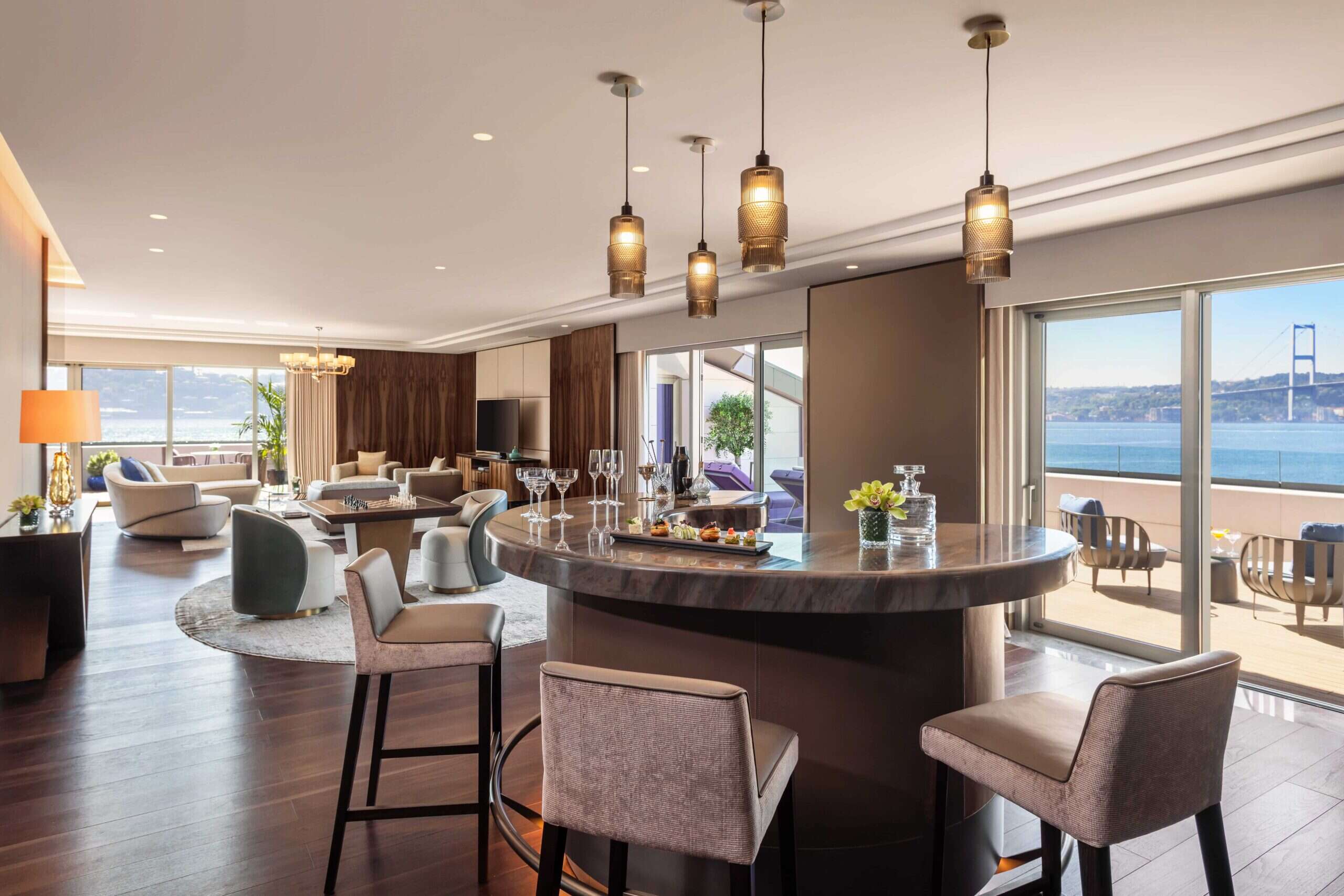
The Mandarin Oriental Bosphorus places 77 guestrooms and 23 suites at the heart of Istanbul. Designed by acclaimed international firm Tihany Design, the rooms take clear inspiration from their traditional Turkish surroundings, with a classic hint of the Orient Mandarin Oriental fans have come to expect.
Exquisite bespoke bronze highlights and marble can be seen throughout the property, while guests should keep their eye out for a tulip design — a key symbol for Istanbul — which is a recurring motif throughout the hotel. All rooms and suites also benefit from either a pleasant pine courtyard view or an impressive Bosphorus one.
The hotel is filled with exquisite details, all of which feature throughout the four different varieties of standard room. The textured fabric that adorns the sliding doors of the bathroom evokes East Asia. Mandarin Oriental has gone so far as to create a unique embroidered, Ottoman-inspired interior lining for the minibar.
The suites are decadent and come in seven different varieties, clear standouts being the Naile Sultan Bosphorus, Presidential and Royal Bosphorus suites. Mandarin Oriental Bosphorus has swiftly risen to become one of the in-demand wedding venues of Istanbul; the Naile Sultan Bosphorus Suite is the immediate go-to for brides and grooms. Separate dressing and powder rooms are ideal for the big day, and its huge balcony and grand stairway access are perfect for photographs.
The Presidential and Royal Bosphorus suites represent the largest and most luxurious of those on offer. Fully equipped private kitchens, gyms and separate rooms for staff like bodyguards with their own entrances and exits, these rooms are fully equipped to guarantee the ultimate luxury for the most decerning guests.
[See also: Bulgari Hotel Tokyo: Tranquility in the World’s Busiest City]
Dine
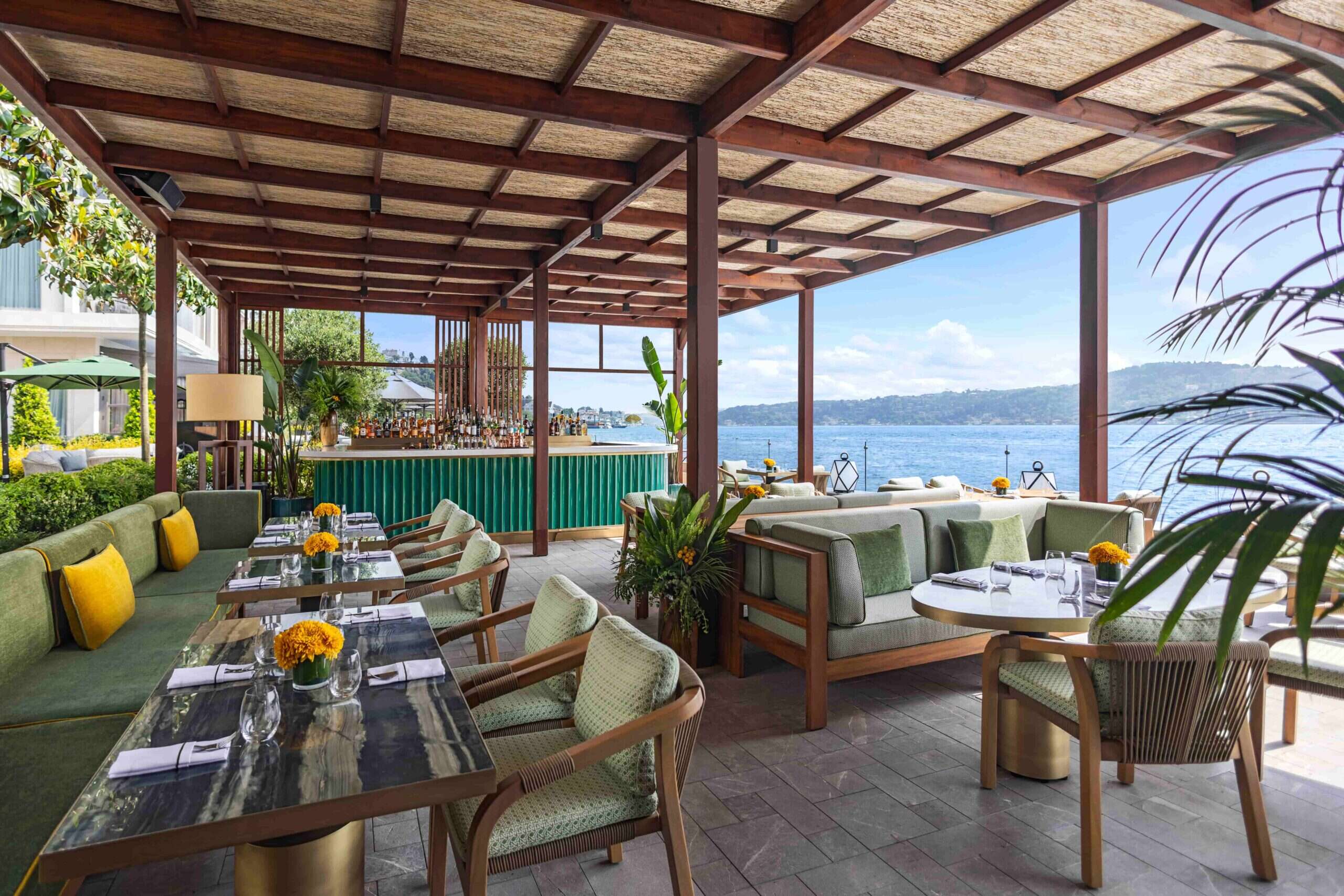
Much like its tastefully decorated rooms, the Mandarin Oriental is not lacking when it comes to flavor. Of course, an extensive menu that covers numerous global cuisines can be ordered directly to your room, but the hotel truly shines with its two fine dining restaurants Olea and Novikov, both a hit with locals and guests alike.
Olea brings a taste of the Mediterranean to the banks of the Bosphorus. Taking its name from the Latin for olive, Olea’s menu is filled with Italian delights. Classic dishes like truffle tagliolini and Porcini mushroom risotto are wonderfully hearty, while meat lovers will be enthralled by a sautéed lamb loin. These flavors feel right at home as the waves gently brush up against the restaurant. If you’re wondering what to drink Olea has the largest Italian wine cellar in Istanbul, so that’s a good place to start. Those looking for a fish dish won’t be disappointed by the locally sourced wares, however, it’s Novikov where fish truly shines.
[See also: Rosewood Announce First Resort in the Maldives]
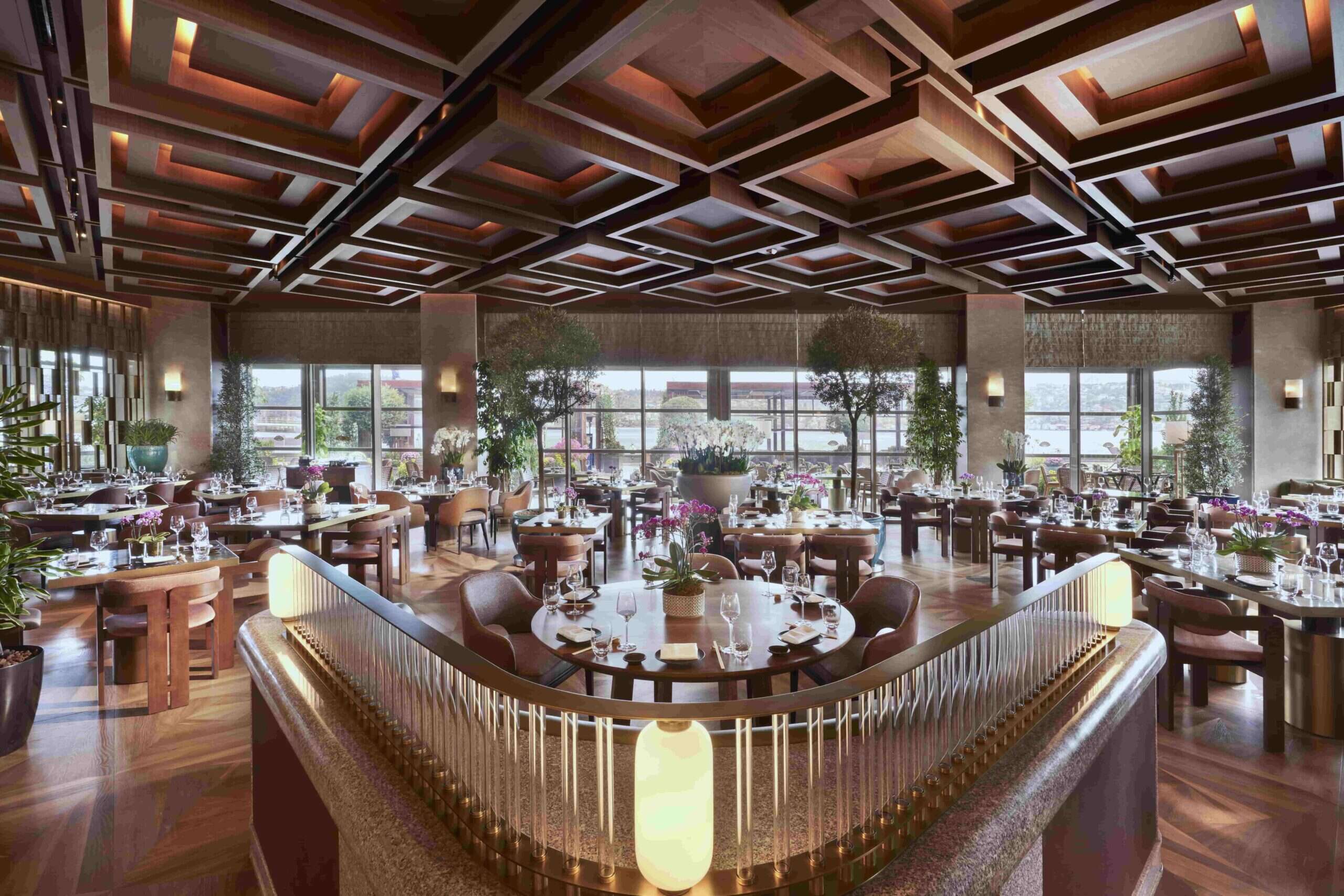
With popular restaurants across the globe in Miami, Dubai and especially London, Novikov has cemented itself in the fine dining scene. One of the most popular restaurants in Istanbul, it’s regularly filled with local revelers looking to sample some of the best sushi in the city. The menu leaps across cultures swinging from sashimi platters to fettuccine Bolognese and miso baby chicken, there’s truly something to excite all palates.
Relax
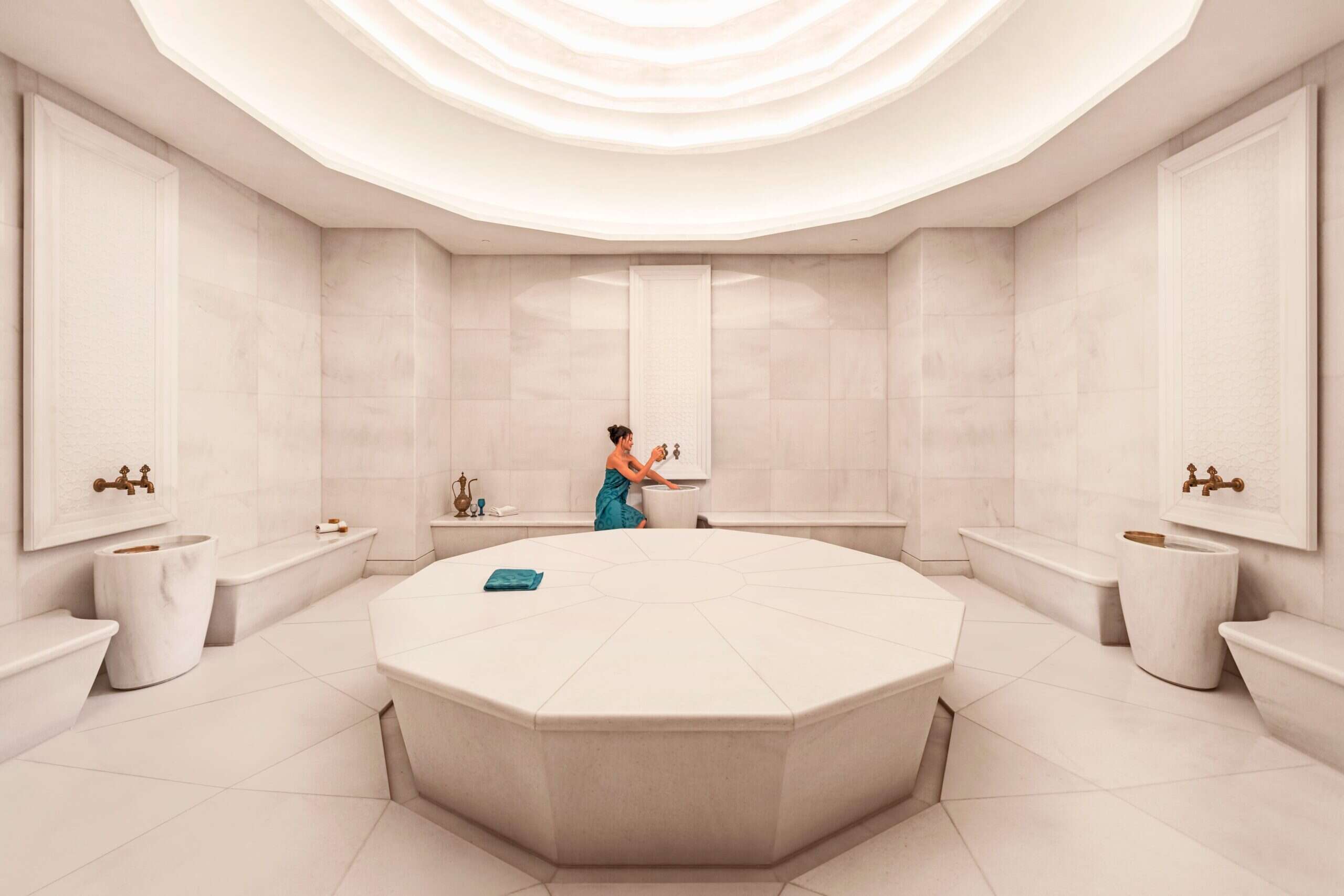
While some like to fill their travels with activities, excursions and adventure, others simply want to relax. Thanks to the aforementioned excavations, the spa and Mandarin Oriental Bosphorus is an impressive 37,000 sq ft. While this huge space is possible as it’s all underground, it really doesn’t feel like it. At its center is a large atrium in the form of a zen relaxation garden, causing light to plunge down and fills the huge space.
Inside the spa, guests are greeted by world-class facilities, a sizable pool, treatment rooms and several hammams — the star of the show. Numerous signature treatments are available that cover all of these facilities including a digital wellness escape designed to reduce the strain that can result from spending sustained time using screens.
The hammams are large and clad in beautiful white Turkish marble. Featuring different temperatures, these rooms stimulate circulation, exfoliate the skin and help to remove toxins from the body. If you’re more of the active type, there is also an extensive fitness center and dedicated on-site personal trainers.
[See also: Casa Chablé: A New Eco Retreat in a Mexican Biosphere]
Explore
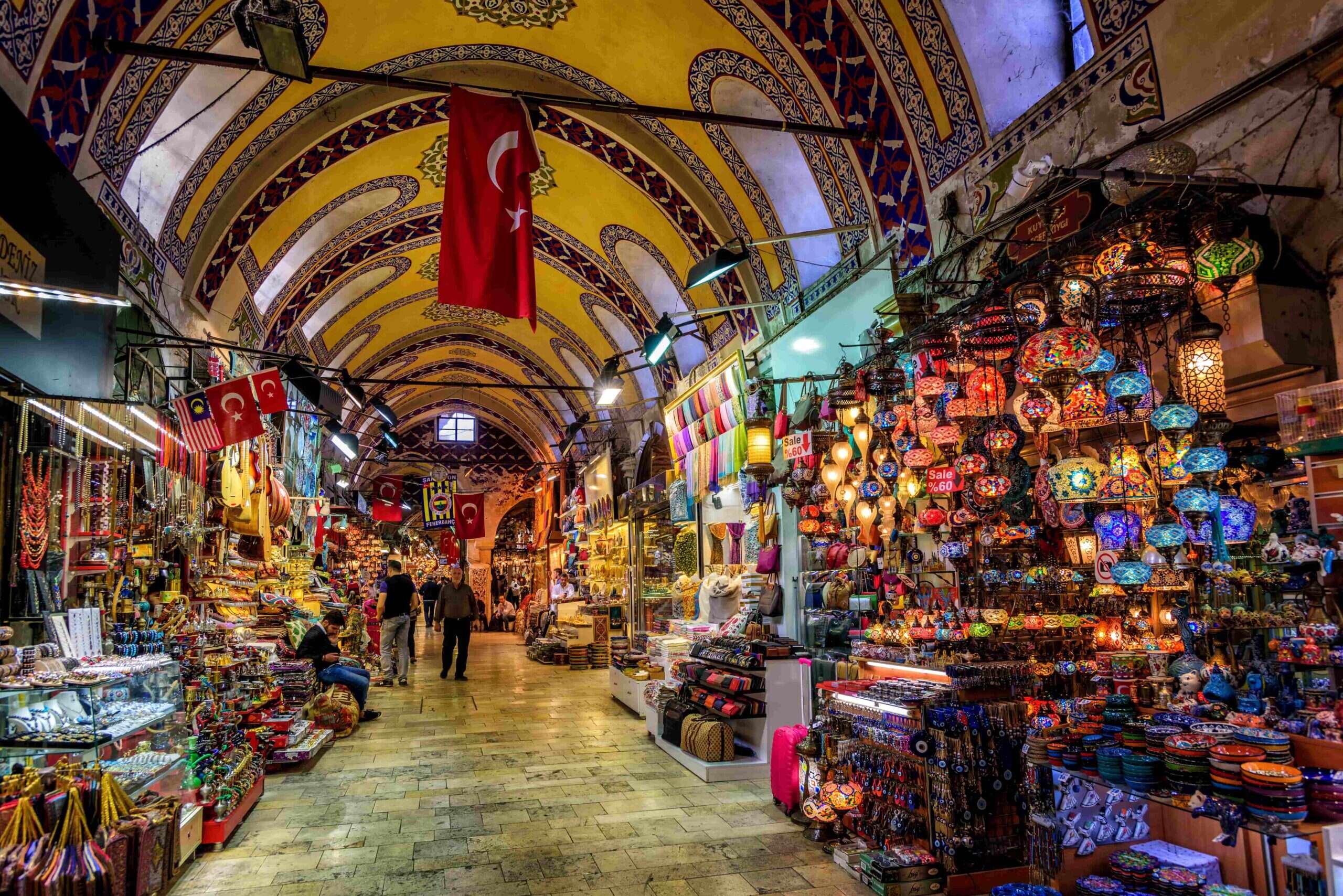
With a population of 17 million — larger than New York City, Los Angeles, Chicago, Houston and Phoenix combined — Istanbul is a true metropolis, easily the largest in Europe. Yet it doesn’t feel like it. The Bosphorus divides the city in two, with the vast majority of people living on the Asian side and most tourist attractions on the European. For a visitor it’s certainly manageable.
If you find yourself in the great city, there are a few things you have to do and I spent an afternoon ticking them off. The Hagia Sofia is one of the finest examples of Byzantine architecture in existence. Constructed in 537 AD, during the past 1480 years it’s been a church, mosque, a museum and in 2020 it became a mosque again. Easily one of the most historic buildings in the city, it’s a true feat of engineering from the very beginning of the medieval era.
In complete contrast to the religious awe and serenity of Hagia Sofia, the Grand Bazar is a cacophony of sound and smells that must be experienced. One of the largest covered markets in the world, there are over 60 roofed streets that contain over 4000 shops, ranging from merchants in solid gold to spice and carpets. It’s the ideal place to do some authentic souvenir shopping. The best way to experience the Grand Bazar is to get lost in it; go exploring, you never know what you might find.
